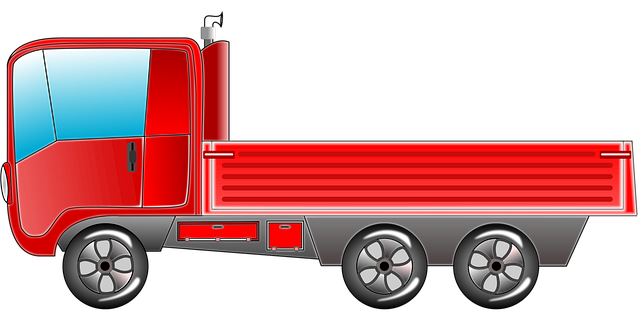Register Car California: Prepare, Verify VIN, Pay Fees
Looking to register your car in California? Our step-by-step guide makes the process clear. First, gather essential documents like proof of ownership and insurance. Then, head to your local California…….

Looking to register your car in California? Our step-by-step guide makes the process clear. First, gather essential documents like proof of ownership and insurance. Then, head to your local California DMV office. Next, complete a dmv VIN verification, ensuring your vehicle’s identity. Pay relevant registration fees and taxes, and finally, receive your official license plate. Simplify car registration in California with these crucial steps and avoid common pitfalls.
- Prepare Required Documents for Car Registration
- Visit Your Local California DMV Office
- Complete Vehicle Identification Number (VIN) Verification
- Pay Registration Fees and Taxes
- Receive Your Registered Vehicle License Plate
Prepare Required Documents for Car Registration

Before you start the registration process, ensure you have all the necessary documents ready. The California Department of Motor Vehicles (DMV) requires specific paperwork to verify ownership and vehicle information. This includes a completed Vehicle Registration application form, along with proof of identification for both you and the current owner or previous lender if applicable.
One crucial document is the Vehicle Identification Number (VIN) verification. You can complete this through a DMV-approved mobile VIN verifier or during a vin inspection at a designated location. The VIN is a unique code that identifies your vehicle, and its accuracy is essential for registration. Having all these documents prepared will streamline the registration process and ensure a smooth transition for your new car in California.
Visit Your Local California DMV Office

To begin the registration process for your vehicle in California, the first step is to visit your local DMV office. This is a crucial step as it ensures that all necessary paperwork and verifications are completed accurately and efficiently. At the DMV, you’ll need to bring with you several key documents, including proof of ownership, valid identification, and current insurance information. The staff at the DMV will guide you through the registration process and may even offer assistance with the required VIN (Vehicle Identification Number) verification.
DMV personnel can perform a VIN verification, which is a critical component of the registration process in California. This involves checking the vehicle’s history to ensure it meets safety standards and that there are no outstanding issues. With the advancement of technology, many people now opt for a mobile VIN verifier or conduct a mobile vin inspection to streamline this step. However, visiting the DMV remains a reliable method to complete this essential task, ensuring your car is legally registered and safe to drive on California’s roads.
Complete Vehicle Identification Number (VIN) Verification

After gathering all the necessary documents, it’s crucial to complete a Vehicle Identification Number (VIN) verification through the DMV or utilizing a reliable mobile VIN verifier. This step is essential for ensuring that your vehicle matches the information on record and helping to prevent fraud. A simple online search for “DMV VIN verification” will guide you through this process, which typically involves entering your car’s unique 17-character VIN into a designated system.
A mobile VIN inspection can be particularly convenient, as it allows you to complete this task from the comfort of your home or even while on the go. With just a few clicks and the assistance of specialized apps or services, you’ll receive instant feedback, confirming your vehicle’s details and facilitating the registration process.
Pay Registration Fees and Taxes

After completing your vehicle’s purchase, it’s time to pay the registration fees and taxes. In California, this process involves both state and local charges. The first step is to perform a DMV (Department of Motor Vehicles) VIN (Vehicle Identification Number) verification, which ensures that your car’s details match the information on record. This can often be done through a simple online check or by visiting a local DMV office. Once verified, you’ll need to pay the registration fee, which varies based on vehicle type and age. There may also be additional taxes, such as sales tax or a clean air fee, that must be covered.
You have the option to complete these steps conveniently through a mobile vin inspection or verification service, allowing you to save time and effort. These services can perform the necessary VIN check remotely, providing instant results and peace of mind. Ensure all fees are paid in full before proceeding with your car’s registration to avoid any delays or additional charges.
Receive Your Registered Vehicle License Plate

After completing your car’s registration process at the California DMV, it’s time to receive your registered vehicle license plate. This essential component not only identifies your vehicle but also signifies that it meets all legal requirements for roadworthiness and emissions standards. The DMV will provide you with a set of plates that include a unique Vehicle Identification Number (VIN) and other necessary details.
For added convenience, many drivers opt for a mobile VIN verifier or conduct a mobile VIN inspection to ensure their vehicle’s registration is accurate and up-to-date. This quick and efficient service allows you to verify your car’s status directly from your smartphone, eliminating the need for visits to the DMV. By utilizing these modern tools, you can conveniently manage your vehicle’s documentation, ensuring a seamless driving experience in California.
Registering a car in California involves several straightforward steps, from gathering necessary documents to receiving your new license plate. By preparing an array of important paperwork, visiting your local DMV office for VIN verification, and paying relevant fees, you can ensure a smooth process. Remember to keep all records organized, as these steps are essential to legally operating your vehicle within the state.







